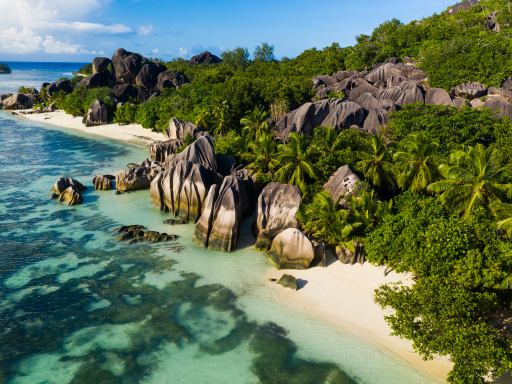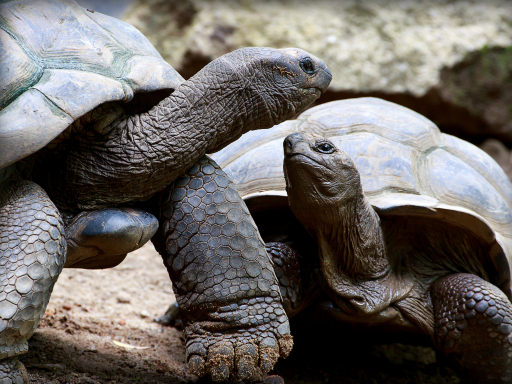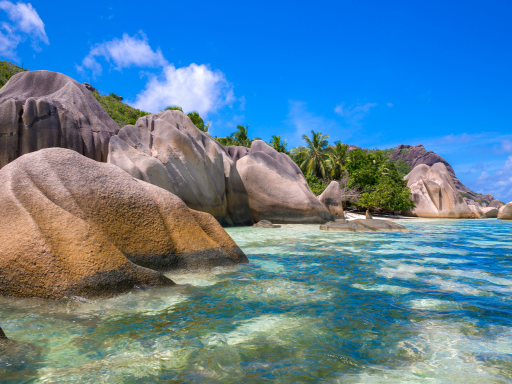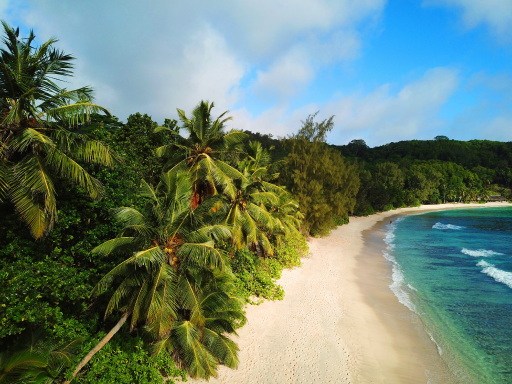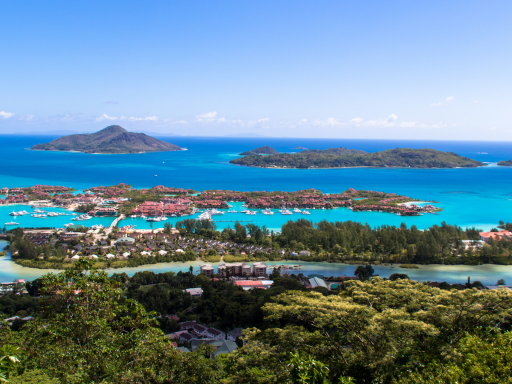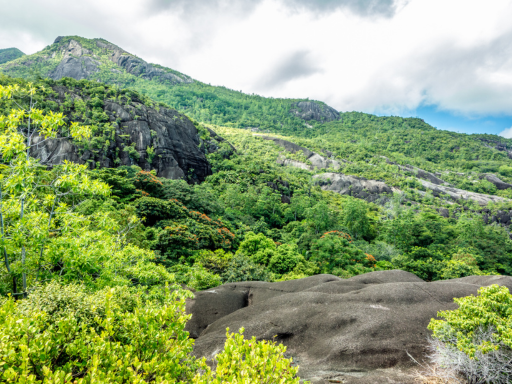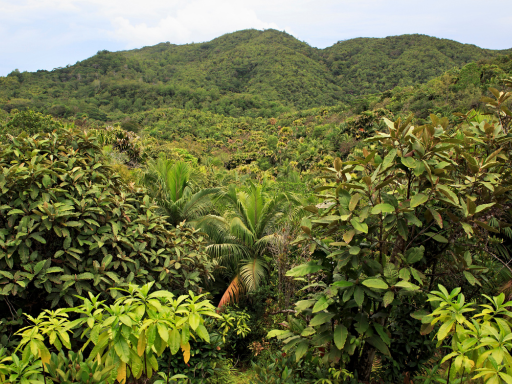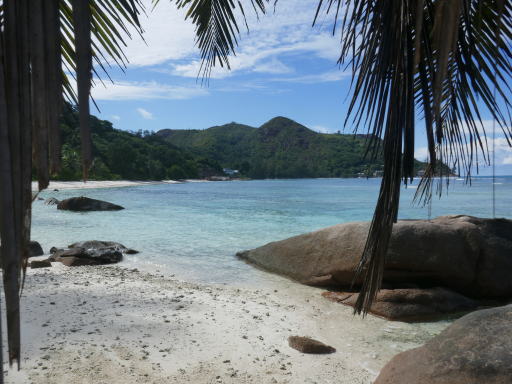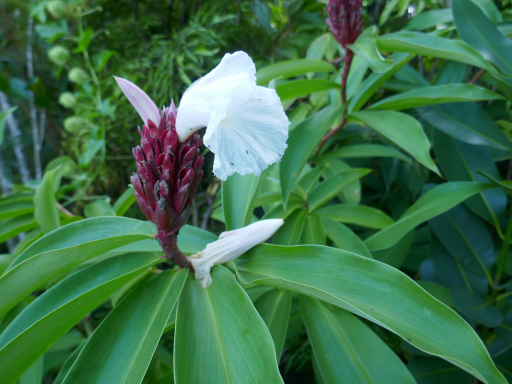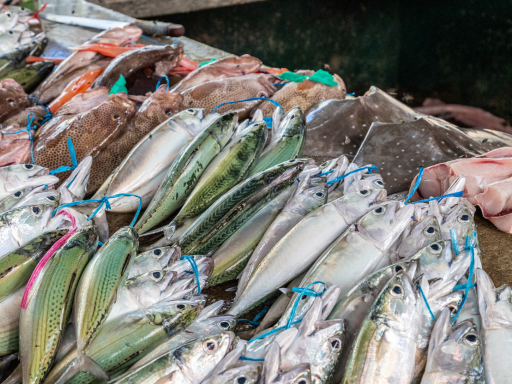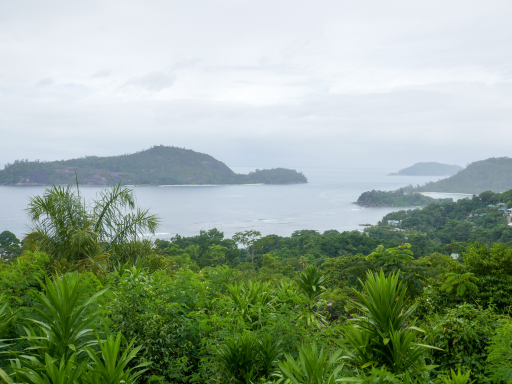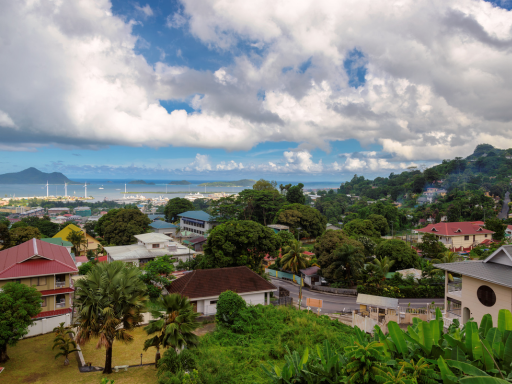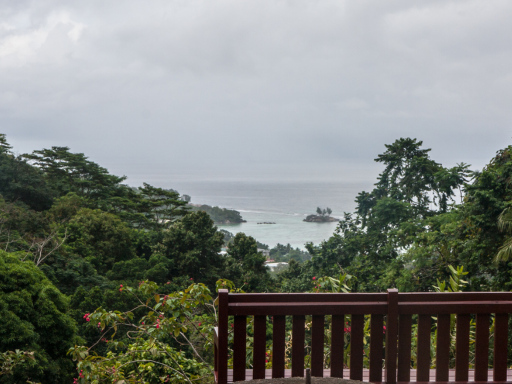Victoria
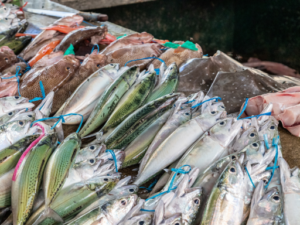
Victoria stands like a queen. As proof, you will see in the middle of a crossroads a reproduction of the clock tower of Big Ben! A sure testimony of the English occupation.
Another unusual monument, the Hindu temple of Victoria and its incredible architecture. Then, go to the central market where you can buy freshly caught fish, exotic fruits and local spices and local handicrafts.
Morne Seychellois
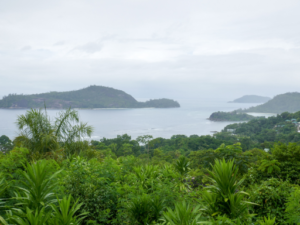
On the island of Mahé, the highest peak in the Seychelles. In the middle of a lush forest, a dozen different trails take you to superb viewpoints, in the midst of dense and varied flora and fauna: the Seychelles islands are home to 7 million migratory or sedentary birds!
Praslin
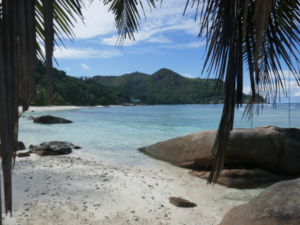
An essential step during your stay in the Seychelles, with its 2 coves:
Anse Lazio, a mythical beach with all the assets that a beach can offer, with fine sand and water that attracts a crowd of multicolored fish. An excellent spot for snorkeling or admiring the sunset.
Another heavenly beach, the beach Anse Georgette, difficult to access because only a path through the undergrowth provides access, but the spectacle it offers is worth it!
Also worth visiting is the Praslin Ocean Farm aquarium, with vast pools housing the island's aquatic fauna and flora.
The Vallée de Mai on Praslin Island
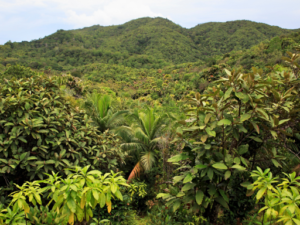
A nature reserve listed as a World Heritage Site by Unesco, composed mainly of palm trees that can only be found on this island. You will come across many species of birds and will be able to closely observe the famous coconut buttocks, the seed of the coco de mer. This park is the largest plantation in the world of this type of palm tree.
Beau vallon
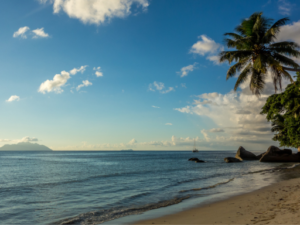
This is Mahé's most famous beach: a huge crescent of 3 kilometers of white sand, the ideal beach to spend the family day The sea is shallow, trees protect you from the sun, and to round off your day, you can admire the magnificent sunset before enjoying a local dinner in one of the restaurants lining the beach.
The King's Garden
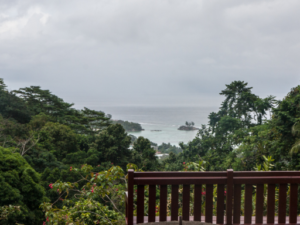
A real haven of peace with a magnificent view of Anse Royale! We come across parrots, fruit trees (papaya, guava, mango, lemons…) but also many spices such as pepper, ginger, nutmeg, cardamom…, then a stop at the restaurant is a must. to eat totally local cuisine.
Victoria Botanical Garden
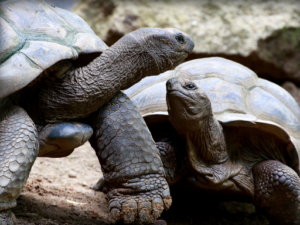
A very beautiful garden located on the outskirts of Victoria to admire an extensive collection of exotic plants. You pass through a landscaped rainforest area, beautiful lawns, a spice garden and incredible fruit trees. You'll spot colorful birds and the Aldabra Giant Tortoises, alive!
The Digue
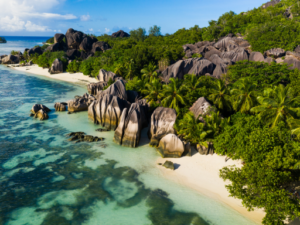
One of the essentials of the Seychelles with its Anse Source d'Argent beach, considered one of the most beautiful beaches in the world, a real paradise! In addition to its heavenly beaches, you will find the Union Estate Park in the middle of coconut palms where you can see giant turtles, a vanilla plantation and a beautiful colonial house.

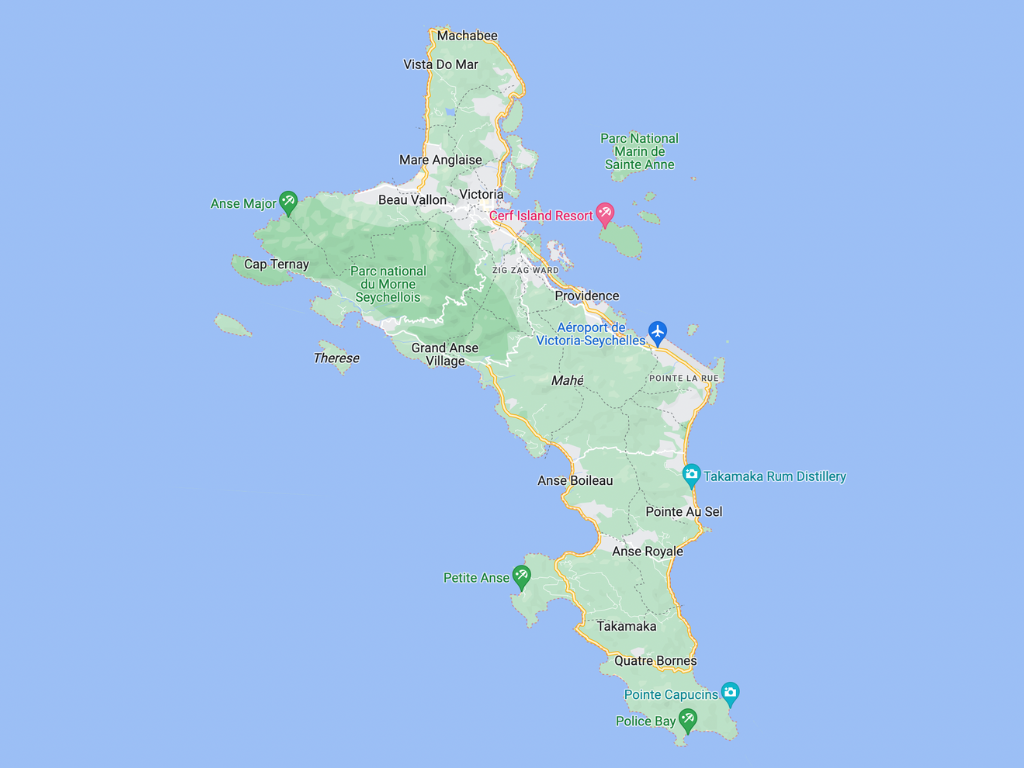











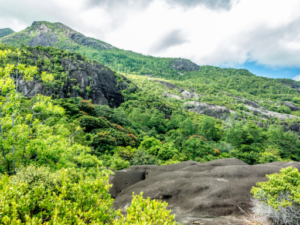 It is the largest national park in the Seychelles. It occupies an area of more than 20% of the island of Mahé. It is also here that the most beautiful hiking trails of the archipelago are found, as well as its highest point: Morne Seychellois.
It is the largest national park in the Seychelles. It occupies an area of more than 20% of the island of Mahé. It is also here that the most beautiful hiking trails of the archipelago are found, as well as its highest point: Morne Seychellois.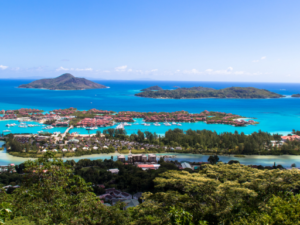 The coral beds of this marine park are remarkably beautiful. A wide variety of tropical fish and multicolored corals occupy these crystal clear waters. Explore this life-size "aquarium". Butterflyfish, trumpetfish, damselfish, pipefish, parrotfish, cardinalfish, picassofish… more than 150 species of fish are found in this marine park!
The coral beds of this marine park are remarkably beautiful. A wide variety of tropical fish and multicolored corals occupy these crystal clear waters. Explore this life-size "aquarium". Butterflyfish, trumpetfish, damselfish, pipefish, parrotfish, cardinalfish, picassofish… more than 150 species of fish are found in this marine park!